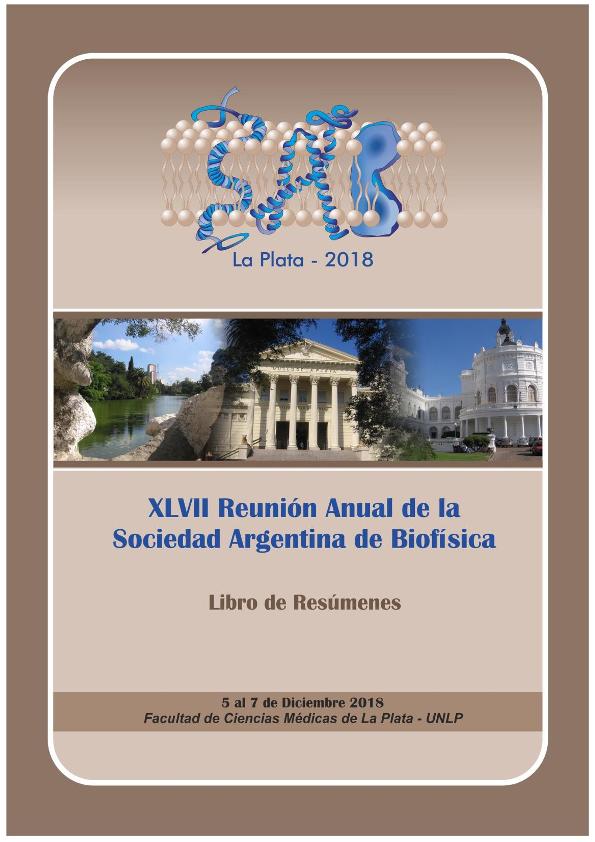Mostrar el registro sencillo del ítem
dc.contributor.author
Ríos Colombo, Natalia Soledad

dc.contributor.author
Chalon, Miriam Carolina

dc.contributor.author
Galván, Adriana Emilce

dc.contributor.author
Navarro, Silvia Adriana

dc.contributor.author
Lanza, Lucía

dc.contributor.author
Barraza, Daniela Estefanía

dc.contributor.author
Acuña, Leonardo
dc.contributor.author
Fernandez de Ullivarri, Miguel

dc.contributor.author
Minahk, Carlos Javier

dc.contributor.author
Bellomio, Augusto

dc.date.available
2023-02-15T16:52:17Z
dc.date.issued
2018
dc.identifier.citation
In vivo systems to study class II bacteriocins toxicity and immunity; XLVII Reunión Anual de la Sociedad Argentina de Biofísica; La Plata; Argentina; 2018; 1-2
dc.identifier.uri
http://hdl.handle.net/11336/188137
dc.description.abstract
Class II bacteriocins are membrane-active peptides that act over a narrowspectrum of bacterial targets and have a great potential application as antibioticsin medical sciences. They act on the cytoplasmic membrane dissipating thetransmembrane potential by forming pores. There is solid evidence thatmembrane receptor proteins are necessary for their function, however the preciserole of this receptor and the nature of the pore remain elusive. The most acceptedmodel suggest that bacteriocins bind the receptor to change its conformation,creating a channel that remains open. Nonetheless, several studies support asecond model in which the bacteriocin is able to disrupt the membrane itself andthe receptor might act just as an anchor allowing the subsequent bacteriocininsertion to form the pore. In order to reveal whether or not the pore structureinvolves the specific receptor, we designed chimeric peptides fusing themembrane protein EtpM with different class II bacteriocins. We chose E. coli as areceptor-free expression host. The fusion EtpM-bacteriocin anchors eachbacteriocin to the membrane and kills the expressing host cell, even in theabsence of the specific receptor. These results are in line with the second model inwhich the pore is formed through a receptor-independent interaction with the lipidbilayer. The effect of these interactions was also analyzed, through a fluorophorethat changes its fluorescence intensity according to transmembrane potential.On the other hand, an immunity protein protects the producer strain against itsown bacteriocin. For antimicrobials under investigation for clinical applications, thepotential emergence of resistant pathogens and the study of immune mechanismsare a primary concern. Though no direct in vitro interaction bacteriocin-immunityhas been reported before, by using an in vivo system, we present evidence thatthis binding might occur, not in aqueous solution but in a membrane inserted .
dc.format
application/pdf
dc.language.iso
eng
dc.publisher
Sociedad Argentina de Biofísica
dc.rights
info:eu-repo/semantics/openAccess
dc.rights.uri
https://creativecommons.org/licenses/by-nc-sa/2.5/ar/
dc.subject
Bacteriocin
dc.subject
Immunity protein
dc.subject
Transmembrane potential
dc.subject
mechanism of action
dc.subject.classification
Biofísica

dc.subject.classification
Ciencias Biológicas

dc.subject.classification
CIENCIAS NATURALES Y EXACTAS

dc.title
In vivo systems to study class II bacteriocins toxicity and immunity
dc.type
info:eu-repo/semantics/publishedVersion
dc.type
info:eu-repo/semantics/conferenceObject
dc.type
info:ar-repo/semantics/documento de conferencia
dc.date.updated
2023-02-10T18:56:23Z
dc.journal.pagination
1-2
dc.journal.pais
Argentina

dc.journal.ciudad
La Plata
dc.description.fil
Fil: Ríos Colombo, Natalia Soledad. Consejo Nacional de Investigaciones Científicas y Técnicas. Centro Científico Tecnológico Conicet - Tucumán. Instituto Superior de Investigaciones Biológicas. Universidad Nacional de Tucumán. Instituto Superior de Investigaciones Biológicas; Argentina
dc.description.fil
Fil: Chalon, Miriam Carolina. Consejo Nacional de Investigaciones Científicas y Técnicas. Centro Científico Tecnológico Conicet - Tucumán. Instituto Superior de Investigaciones Biológicas. Universidad Nacional de Tucumán. Instituto Superior de Investigaciones Biológicas; Argentina
dc.description.fil
Fil: Galván, Adriana Emilce. Consejo Nacional de Investigaciones Científicas y Técnicas. Centro Científico Tecnológico Conicet - Tucumán. Planta Piloto de Procesos Industriales Microbiológicos; Argentina
dc.description.fil
Fil: Navarro, Silvia Adriana. Consejo Nacional de Investigaciones Científicas y Técnicas. Centro Científico Tecnológico Conicet - Tucumán. Instituto Superior de Investigaciones Biológicas. Universidad Nacional de Tucumán. Instituto Superior de Investigaciones Biológicas; Argentina
dc.description.fil
Fil: Lanza, Lucía. Consejo Nacional de Investigaciones Científicas y Técnicas. Centro Científico Tecnológico Conicet - Tucumán. Instituto Superior de Investigaciones Biológicas. Universidad Nacional de Tucumán. Instituto Superior de Investigaciones Biológicas; Argentina
dc.description.fil
Fil: Barraza, Daniela Estefanía. Consejo Nacional de Investigaciones Científicas y Técnicas. Centro Científico Tecnológico Conicet - Tucumán. Instituto Superior de Investigaciones Biológicas. Universidad Nacional de Tucumán. Instituto Superior de Investigaciones Biológicas; Argentina
dc.description.fil
Fil: Acuña, Leonardo. Consejo Nacional de Investigaciones Científicas y Técnicas. Centro Científico Tecnológico Conicet - Tucumán. Instituto Superior de Investigaciones Biológicas. Universidad Nacional de Tucumán. Instituto Superior de Investigaciones Biológicas; Argentina
dc.description.fil
Fil: Fernandez de Ullivarri, Miguel. Consejo Nacional de Investigaciones Científicas y Técnicas. Centro Científico Tecnológico Conicet - Tucumán. Instituto Superior de Investigaciones Biológicas. Universidad Nacional de Tucumán. Instituto Superior de Investigaciones Biológicas; Argentina
dc.description.fil
Fil: Minahk, Carlos Javier. Consejo Nacional de Investigaciones Científicas y Técnicas. Centro Científico Tecnológico Conicet - Tucumán. Instituto Superior de Investigaciones Biológicas. Universidad Nacional de Tucumán. Instituto Superior de Investigaciones Biológicas; Argentina
dc.description.fil
Fil: Bellomio, Augusto. Consejo Nacional de Investigaciones Científicas y Técnicas. Centro Científico Tecnológico Conicet - Tucumán. Instituto Superior de Investigaciones Biológicas. Universidad Nacional de Tucumán. Instituto Superior de Investigaciones Biológicas; Argentina
dc.relation.alternativeid
info:eu-repo/semantics/altIdentifier/url/https://biofisica.org.ar/reuniones-cientificas/reunionsab-previas/
dc.conicet.rol
Autor

dc.conicet.rol
Autor

dc.conicet.rol
Autor

dc.conicet.rol
Autor

dc.conicet.rol
Autor

dc.conicet.rol
Autor

dc.conicet.rol
Autor

dc.conicet.rol
Autor

dc.conicet.rol
Autor

dc.conicet.rol
Autor

dc.coverage
Internacional
dc.type.subtype
Reunión
dc.description.nombreEvento
XLVII Reunión Anual de la Sociedad Argentina de Biofísica
dc.date.evento
2018-12-05
dc.description.ciudadEvento
La Plata
dc.description.paisEvento
Argentina

dc.type.publicacion
Book
dc.description.institucionOrganizadora
Sociedad Argentina de Biofísica
dc.source.libro
Libro de Resúmenes: XLVII Reunión Anual de la Sociedad Argentina de Biofísica
dc.date.eventoHasta
2018-12-07
dc.type
Reunión
Archivos asociados
